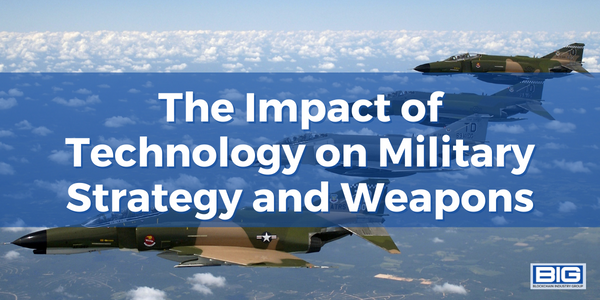
Over the next decades, the strategies, weapons, and tools of war are expected to be greatly impacted and progressed by the convergence of various emerging technologies.
Here are some of the most impactful ways that this transformation is likely to occur:
- Autonomous systems. The use of autonomous systems, such as drones and robots, is expected to increase in the military, enabling tasks to be performed more efficiently and accurately. These systems could be used for a range of applications, including surveillance, reconnaissance, and even offensive operations.
- Cyber warfare. The development of advanced cyber capabilities is expected to enable the use of cyber attacks as a key component of military strategy. This could include the disruption of enemy communication and infrastructure, as well as the theft of sensitive information.
- Artificial intelligence. The use of artificial intelligence in the military is expected to increase, enabling the development of advanced decision-making systems and the automation of tasks such as target identification and analysis.
- Augmented and virtual reality. Augmented and virtual reality technologies are expected to have a significant impact on military training and education, enabling the simulation of realistic environments and scenarios. These technologies could also be used to enhance the effectiveness of military equipment and weapons.
- Directed energy weapons. The development of directed energy weapons, such as lasers and microwave weapons, is expected to enable the development of non-lethal and more precise forms of warfare. These weapons could be used to disable or disrupt enemy equipment and systems, while minimizing collateral damage.
- Quantum computing. The development of quantum computing is expected to have a significant impact on military strategy and operations, enabling the processing of large amounts of data at much faster speeds than is currently possible. This could be used for a range of applications, including the analysis of large amounts of intelligence data and the development of advanced simulations and models.
- Biometric identification. The use of biometric identification technologies, such as facial recognition and fingerprint scanning, is expected to increase in the military, enabling the identification and tracking of individuals in real-time. This could be used for a range of applications, including the identification of enemy combatants and the verification of friendly forces.
- Energy weapons. The development of advanced energy weapons, such as plasma weapons, is expected to enable the development of more powerful and precise forms of weaponry. These weapons could be used to disable or destroy enemy equipment and systems, while minimizing collateral damage.
- Advanced materials. The development of advanced materials, such as graphene and other nanomaterials, is expected to enable the development of more lightweight and durable military equipment and weapons. These materials could be used to create more effective body armor and other protective gear, as well as more powerful and efficient energy systems.
- Exoskeletons. The use of exoskeletons, or wearable robotics, is expected to enable soldiers to perform tasks that would otherwise be physically demanding or impossible. These exoskeletons could be used to enhance strength, endurance, and agility, and could enable soldiers to carry heavy loads over long distances or to operate in hazardous environments.
Finance and the Promise of Future Technology
—
Healthcare and the Promise of Future Technology
—
Hospitality and the Promise of Future Technologies
Overall, the convergence of these and other emerging technologies is expected to greatly impact and progress military strategies, weapons, and tools in the coming decades. By leveraging these technologies, military forces may be able to perform tasks more efficiently and accurately, and may have access to new forms of weaponry and equipment that offer greater precision and reduced collateral damage. However, the development and deployment of these technologies also raises important ethical and moral considerations, and the responsible use of these technologies will be crucial in ensuring that they are used in a way that is consistent with international law and the principles of just warfare.



